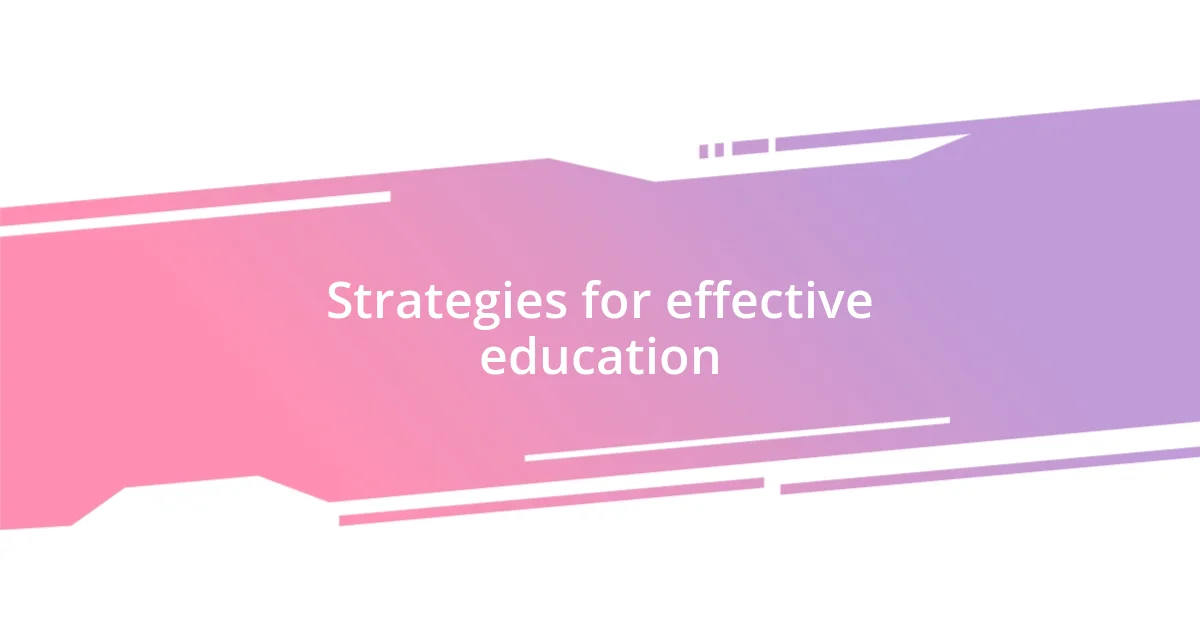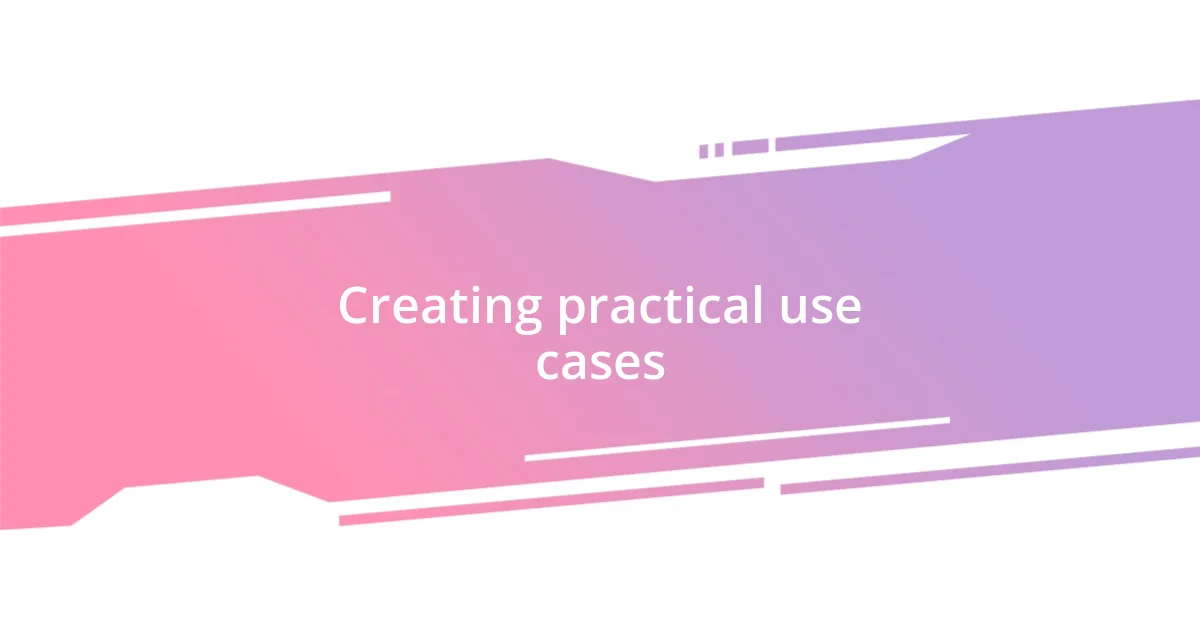Key takeaways:
- Education is vital for blockchain adoption; using simple analogies, visual aids, and real-world applications can demystify the technology for stakeholders.
- Building trust among stakeholders through transparent communication, storytelling, and including them in decision-making cultivates a collaborative environment.
- Navigating regulatory challenges requires proactive engagement with regulators and staying informed about regulations to foster support and understanding of blockchain benefits.

Understanding blockchain adoption challenges
Understanding blockchain adoption challenges can feel daunting. I remember my first exposure to blockchain technology; the complexity was overwhelming. It raised questions for me: How do I even begin to navigate a system that seems designed for tech experts? I realized then that a lack of understanding and education is a significant barrier for many.
From my perspective, one major challenge is the skepticism surrounding blockchain’s security. There have been high-profile hacks and failures that left people questioning if these systems could genuinely be trusted. I felt that nagging doubt myself, wondering if my investments were safe. It’s essential to address these concerns through transparency and effective communication about the technology’s safeguards.
Another barrier is the resistance to change within organizations. I recall a conversation with a colleague who was hesitant to adopt blockchain for supply chain management. Their fear of disrupting established processes made me reflect: What if we held onto outdated systems and missed the opportunity for innovation? This resistance often stems from the uncertainty of how blockchain can fit into existing frameworks, and it’s crucial to highlight the tangible benefits and solutions it can provide.

Identifying common hurdles faced
Identifying the common hurdles in blockchain adoption reveals some real barriers that many of us face. Think about the first time you tried to explain blockchain to a friend or a colleague. The blank stares and the endless questions can be quite disheartening. This kind of disconnect often highlights a lack of understanding and knowledge, which not only frustrates the initiator but also reinforces the fear that surrounds the technology.
Some of the common hurdles include:
– Limited familiarity with the technology: Many individuals and companies struggle to grasp blockchain principles, which stifles enthusiasm.
– Fear of security issues: Concerns about potential hacks and vulnerabilities can deter investment and engagement.
– Regulatory uncertainty: The constantly evolving legal landscape creates anxiety around compliance, making businesses hesitant to integrate blockchain solutions.
– Cultural resistance: Organizational inertia and a reluctance to change existing processes can significantly hinder progress.
– Scalability issues: Questions about whether blockchain can efficiently handle large-scale operations may lead businesses to reconsider their options.
Stepping back, I recall the palpable frustration during a workshop I attended. Many participants were eager to dive into blockchain applications but found themselves lost in technical jargon. This moment underscored the need for tailored education and open discussions to demystify blockchain. Without addressing these hurdles, the potential benefits of blockchain may remain just that—potential, not reality.

Strategies for effective education
Education is crucial when it comes to blockchain adoption, and I vividly recall a session I led for a group of local entrepreneurs. The majority had little to no background in technology, and I realized that breaking down complex concepts into relatable scenarios was vital. By comparing blockchain to everyday transactions, they began to connect the dots. This tailored approach made a significant difference in their understanding.
Another effective strategy I found is using visual aids. During one workshop, I created infographics that illustrated the flow of transactions within a blockchain network. The participants responded positively, showing a spark of interest when they visually grasped how the technology worked. Visual learning not only engages but also caters to different learning styles, making the subject more accessible.
Lastly, aligning blockchain education with real-world applications can be a game-changer. I set up a collaborative project where attendees could explore blockchain’s impact on their specific sectors. Seeing firsthand how blockchain could solve problems in supply chain management, for example, enabled them to appreciate its potential. This hands-on experience transformed skepticism into eagerness for learning more.
| Strategy | Description |
|---|---|
| Simple Analogies | Break down complex concepts into everyday scenarios for better understanding. |
| Visual Aids | Use infographics and presentations to illustrate how blockchain works. |
| Real-World Applications | Engage participants with hands-on projects relevant to their sectors. |

Building stakeholder trust
Building trust among stakeholders is absolutely critical in the journey towards blockchain adoption. I remember sitting in a meeting where executives were anxious about the transparency of blockchain. Their fears weren’t unfounded; after all, how do you convince decision-makers to embrace a new technology that seems shrouded in mystery? I found that fostering an open dialogue about blockchain’s unique features — like immutability and decentralization — turned their skepticism into curiosity.
I’ve also learned that demonstrating past successes can significantly enhance trust. For instance, I shared a case study demonstrating how a well-known company improved its supply chain with blockchain. As I saw their expressions shift from doubt to intrigue, I realized storytelling could be a powerful tool. After all, when stakeholders can visualize tangible benefits, their resistance often melts away.
It’s incredible how a simple commitment to transparency can lead to stronger relationships. I made it a point to provide regular updates and involve stakeholders in the decision-making process. When they saw I valued their input, it drastically improved collaboration. Can you imagine how much more willing they became to explore blockchain once they felt included? Building trust isn’t just about reassurances; it’s about creating a shared journey towards a new frontier.

Creating practical use cases
Creating practical use cases was a pivotal moment in my journey of driving blockchain adoption. I distinctly remember collaborating with a local grocery chain to optimize their supply chain. The lack of transparency in their operations was alarming, and we started mapping out how blockchain could enhance traceability. When we piloted a small-scale trial that allowed customers to trace the origin of their produce, the results were astounding. Seeing the shoppers’ faces light up as they realized they could follow their food’s journey was incredibly rewarding for me.
Another experience that stands out involved a healthcare organization struggling with patient records management. I suggested we create a blockchain-based platform that securely shared patient data among providers. The initial hesitance was palpable — after all, who wants to mess with something as sensitive as health information? Yet, once we set up a mock system and conducted a few trial runs, the team’s skepticism transformed into excitement. The realization that they could drastically reduce administrative errors and enhance patient care was exhilarating, and I couldn’t help but feel proud knowing we contributed to a brighter future in healthcare.
I often ponder how these practical use cases not only resonate emotionally with users but also make the technology tangible. When I engage with organizations, I encourage them to envision their own challenges turned into success stories. Can you imagine the impact of blockchain in your field if you just take that leap? By framing complex technology in the context of specific, relatable situations, I found that it inspires not only curiosity but also a strong desire to embrace change.

Overcoming regulatory obstacles
Navigating the regulatory landscape has often felt like walking through a maze—it’s complex and requires a keen sense of direction. During my early days in blockchain adoption, I once found myself in a lengthy meeting with legal advisors who were bogged down by compliance concerns. Their apprehensions were palpable; they questioned whether we could even proceed with implementation without inadvertently breaching existing regulations. It was in that moment that I realized the importance of proactive engagement with regulators. By establishing open lines of communication, I could address their concerns head-on and lay down a path towards collaborative understanding.
One strategy that proved effective was bringing regulators into our discussions early on. I recall inviting a local regulatory body to observe one of our pilot projects. Their participation not only demystified our process but also fostered a sense of partnership. Watching the regulators witness the benefits firsthand, as they scrutinized how secure and transparent the technology could be, was a game changer. It transformed their initial skepticism into genuine support, allowing us to tackle regulatory obstacles together. How many opportunities could we unlock if we simply invited stakeholders on this journey rather than keeping them at arm’s length?
Of course, staying informed about evolving regulations was crucial. I dedicated time each week to research and understand the latest in blockchain laws. This commitment not only equipped me with the knowledge to advocate for our initiatives but also demonstrated to regulators that we were serious about compliance. I remember a discussion where I cited recent regulatory changes, and I could see their confidence in our project grow. It became clear that overcoming regulatory obstacles is not just about following the rules; it’s about building relationships and understanding how we can all benefit from this innovative technology.

Measuring success in adoption efforts
Measuring success in blockchain adoption requires more than just a few metrics; it involves storytelling through data. In one of my projects, we assessed success by analyzing user feedback and engagement levels post-implementation. Not only did we track usage statistics, but I also organized informal meetups where users could share their experiences. Hearing their stories firsthand was enlightening—it underscored the real-world impact of our initiatives and made the numbers resonate on a human level.
I remember feeling a rush of pride after we successfully reduced transaction times for a financial services client. We established clear benchmarks during the initial phases, and as we surpassed them, the evidence was not just in the numbers but in the excitement of the employees using the system. Isn’t it fascinating how success can ignite motivation within a team? Witnessing their enthusiasm transformed my perspective on success from mere metrics to a shared journey of growth and improvement.
Moreover, I found that qualitative measures, like user satisfaction surveys, often revealed insights that raw data couldn’t capture. During one project, a simple question—“How has this changed your work life?”—yielded heartfelt responses that highlighted the technology’s impact on reducing stress and improving efficiency. This experience taught me that while quantitative success is crucial, the emotional connection forged through adoption efforts can be just as telling. Wouldn’t you agree that true success lies not only in numbers but in the value we create for people?














